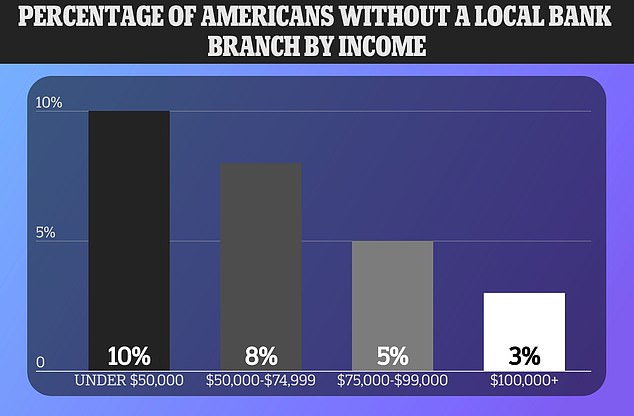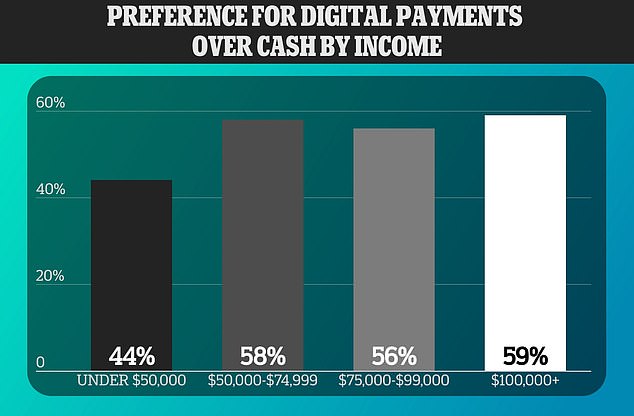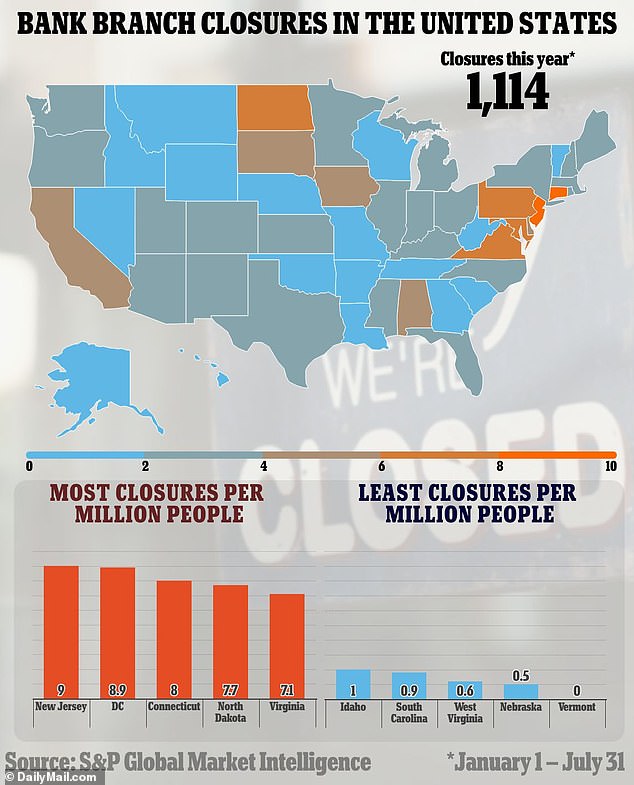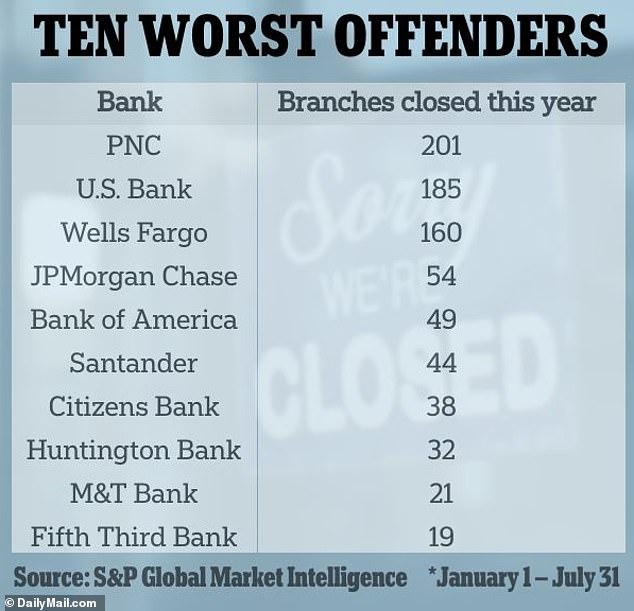Majority of Americans are concerned about bank branch closures – which are hitting poorer households hardest – as firms like Wells Fargo, PNC and U.S. Bank abandon more than 1,000 locations this year alone
The majority of Americans are concerned about widespread bank branch closures, which are hitting low-income households hardest.
A growing number of people are finding themselves without access to basic financial services, with major banks already cutting more than 1,000 branches this year.
Data from S&P Global Market Intelligence shows that a total of 1,144 national and regional banks were closed between January 1 and July 31 across 49 states – with companies pulling out of some areas faster than others.
And an exclusive DailyMail.com survey found that 51 percent of Americans are “very concerned” or “somewhat concerned” about the impact of shrinking outlets, which disproportionately affects poorer households.
An exclusive survey by Opinium finds that more than half of Americans are “very” or “somewhat” concerned about bank branch closures.

Data shows that bank branch closures hit low-income communities hardest.
This is compared to just 3% of Americans whose household income is $100,000 or more.
The survey also found that physical services are less accessible to Black Americans.
While 14% of black Americans report not having a local branch, only 8% of white Americans do.
With inflation soaring and the cost of living rising, experts warn that customers may be more likely to want to discuss their finances in person with their bank.
Branches are a lifeline for anyone who wants to speak to a member of staff or complete simple tasks like cashing a check, making a deposit or accessing cash.
According to National Coalition for Community Reinvestmenta third of sites closed between 2017 and 2021 occurred in predominantly low-income, majority-minority areas.
Accelerated closures risk seeing communities become what are called “banking deserts” – when they do not have access to a bank or credit union within a 10-mile radius – leaving residents increasingly more vulnerable and falling prey to high-fee lending options such as payday loans.
As banks eliminate branches, they are also increasingly turning to digital services – a shift that has been significantly accelerated by the Covid-19 pandemic.
According to a study by Opinium, half of Americans prefer to pay using a digital payment method rather than cash.
The preference for using digital payment methods also increases quite steadily with income – likely due to costly barriers to entry.
About two in five people – about 44 percent – who earn less than $50,000 a year prefer digital payment methods, compared to 59 percent of those who earn $100,000 or more.

The preference for using digital payment methods also increases quite steadily with income – likely due to costly barriers to entry.
Grace Miller, head of research at Opinium, said: “Although the majority of Americans prefer digital payment methods over cash, recent bank closures in the United States still cause concern.
“The digital transition highlights disparities in accessibility, particularly for Americans with the lowest incomes.
“As the financial landscape evolves, it is important not to overlook populations negatively impacted by bank closures and the growing popularity of digital payment methods.”
The latest wave of U.S. bank closures in the first seven months of this year brings the total since 2019 to 10,680.
A handful of smaller regional banks were affected, but national banks including Wells Fargo, Chase and US Bank made up the majority.

While California saw the most closures in absolute terms, New Jersey suffered the greatest losses per capita with a total of 83. It was followed by Washington DC and Connecticut.

Although a handful of closures affected smaller regional banks, national banks, including Wells Fargo, Chase and US Bank, accounted for the bulk.
The PNC was the worst offender, removing a total of 201 bank branches in just seven months. US Bank and Wells Fargo followed closely, having closed 185 and 160 branches, respectively.
A Wells Fargo spokesperson told DailyMail.com last month that while branches are closing in many areas, smaller numbers are opening in a handful of thriving markets.
“As the total number of branches continues to decline, new branches are opening in high-growth neighborhoods in existing markets, allowing us to offer more branch conveniences,” they said in a statement .
“We can also open new branches by combining two older existing branches into one better located location. Additionally, customers are using our broad range of digital capabilities for many of their banking needs and, as a result, more transactions are taking place outside of the branch.
